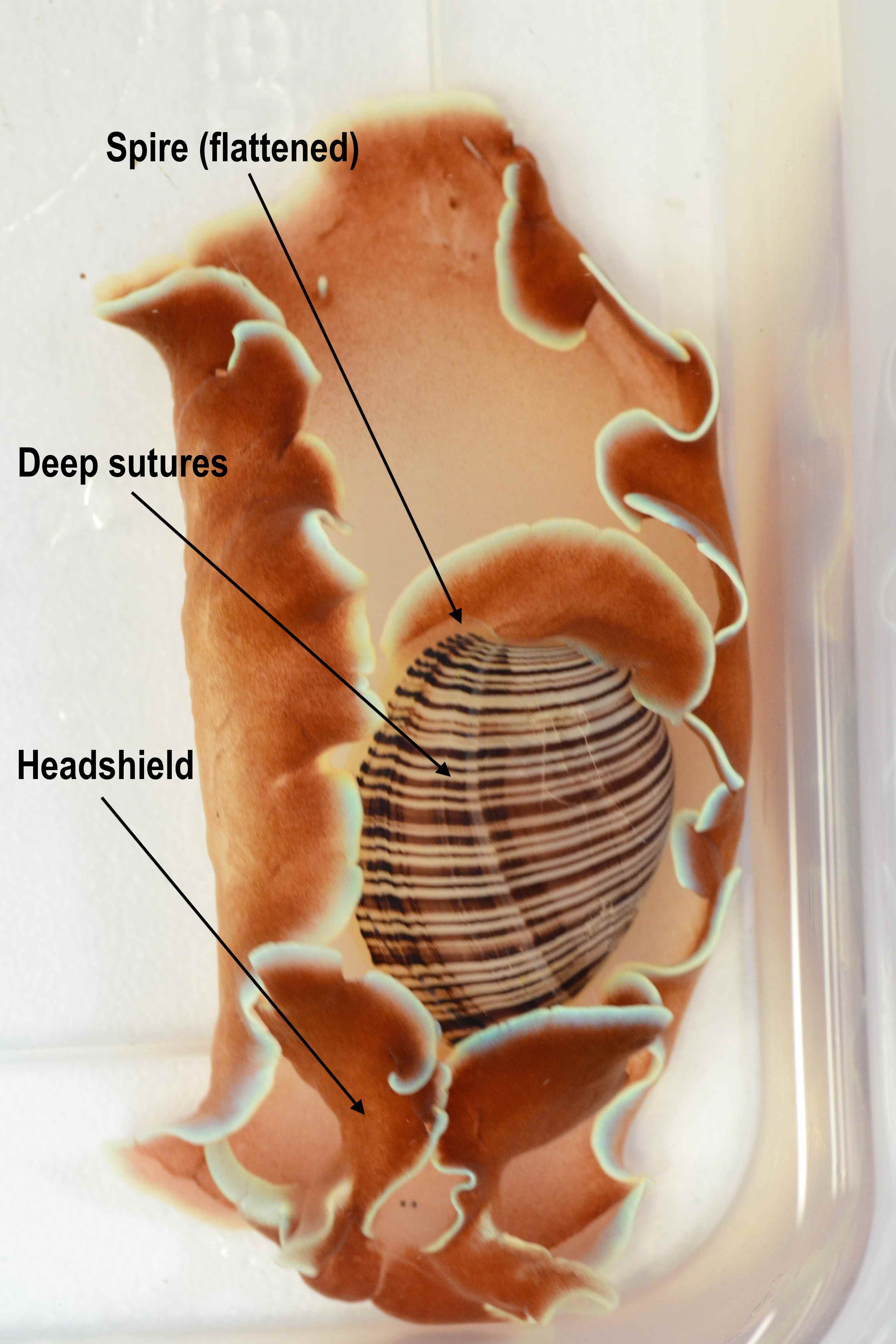PHYSICAL DESCRIPTION
The Opistobranchs are highly evolved gastropods. Most are soft-bodied, and often strikingly coloured, with efficient defenses against predators (Debelius 1998). They have a flattened spire, and deep sutures where adjacent shell whorls join together (Figure 2).
Members of the order Cephalaspidea (Headshield Slugs), most closely resemble their prosobranch ancestors (other sea, land and freshwater snails). The vast majority of Headshield Slugs have a large body and a shell that may either be reduced, like in H. physis, or internal. As such, they are incapable of fully retracting into their shell.
Cephalaspidea come in all shapes and sizes. Its body and shell are modified: it has no tentacles and their reduced shell size enabling it to streamline the animal for burrowing. Their well-developed headshield allows them to plow beneath the surface of the sand, allowing them to burrow in search of prey (Behrens 2005).
 Figure 2. Bird's eye view of Hydatina physis, full body
Figure 2. Bird's eye view of Hydatina physis, full body